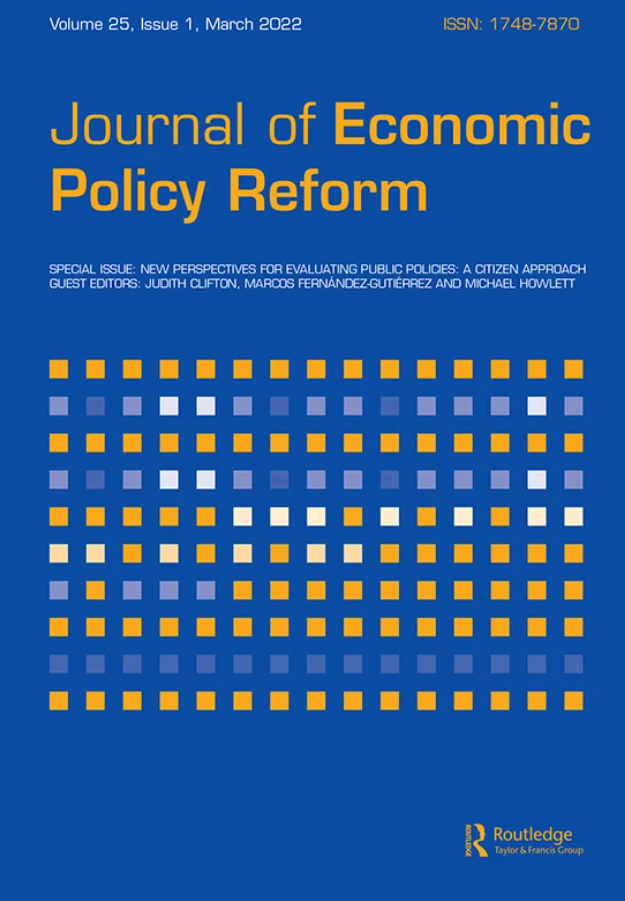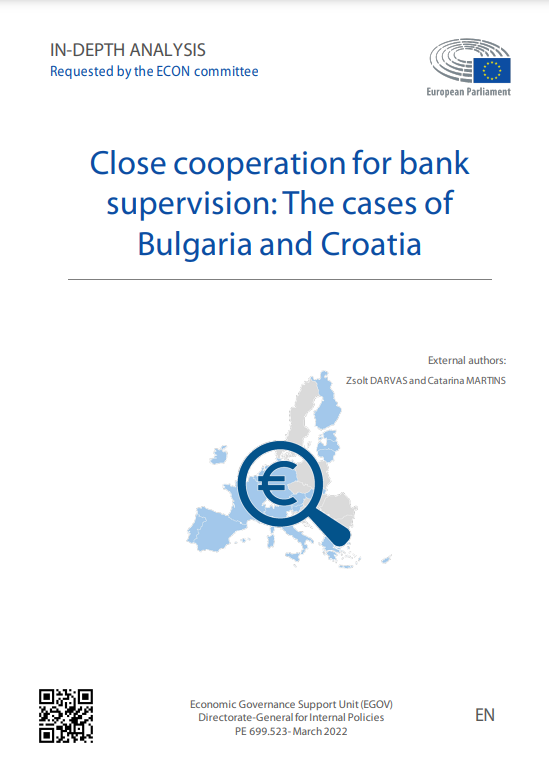Blog Post
Green central banking
A few weeks ago, Silvia Merler discussed the rise of “ethical investing”. A related question emerging from the discussion is whether central banks should also “go green”. Silvia reviews the latest developments and opinions on this topic.
A UN report published last year looked in detail at the role of central banks in enhancing green finance. Given the enormous investments needed to bring about a green transformation, the financial sector will have to play a central role in allocating resources towards a sustainable and green economy, and stop financing activities that harm the environment.
The paper examines the extent to which environmental factors impinge on central banks’ conventional goals and provides a theoretical analysis of the cases for and against central banks responding to environmental and sustainability challenges. It also explores ways in which central banks and financial regulatory authorities can impact both investment decisions and creation and allocation of credit through policies that support the goal of “greening” financial systems. While making the case for a proactive, “sustainable development role” of central banks, the paper also discusses the risks of overstretching mandates.
Emanuele Campiglio and his co-authors look at similar issues. The role of central banks and financial regulators in re-directing finance towards low-carbon investments by means of their policy tools, e.g. via bank lending, has been highly controversial. Their monetary and macroprudential policy tools could prove effective in managing a potential “carbon bubble” before it creates systemic effects. However, these institutions will be eager to do more to encourage lending towards low-carbon investments only if they perceive their mandate to allow them to do so. Whether such a mandate is appropriate requires further examination, according to the authors, for two reasons. First, because there is a risk of overburdening central banks and financial regulators with an excessively wide range of responsibilities. And second, because as unelected institutions, it may be undesirable to entrust too much power to them without the proper democratic checks and balances, especially as this would leave these institutions vulnerable to lobbying by special interests.
Simon Dikau and Ulrich Volz have a paper out at the Asian Development Bank Institute, arguing that responsibility for financial and macroeconomic stability lies implicitly or explicitly with the central bank, which therefore ought to address climate-related and other environmental risks on a systemic level. Furthermore, central banks, through their regulatory supervision over money, credit, and the financial system, are in a position to support the development of green finance and enforce an adequate pricing of environmental and carbon risk by financial institutions.
Dikau and Volz distinguish five different policy areas where they believe Central Bank could “go green”, i.e. (i) micro-prudential regulation (e.g. by requiring banks and other financial institutions to adopt Environmental & Social risk-management standards, to assess and disclose climate-related risks, or to adjust reserve holdings); (ii) macroprudential regulation (such as the Central Bank of Brazil introduced in 2011); (iii) financial market development (by participating in the creation of an enabling environment for the issuance and trading of green securities); (iv) credit allocation, and (v) central bank soft power and guidelines.
Sini Matikainen and co-authors look at the climate impact of quantitative easing (QE), arguing that central banks should consider how their operation of monetary policy could affect the transition to a low-carbon economy. The reason behind this is that even supposedly market-neutral interventions by central banks may show an unintended structural bias towards carbon-intensive industry incumbents. A sectoral analysis of the QE corporate bond purchase programmes of the European Central Bank (ECB) and the Bank of England (BoE) suggests a skew towards high-carbon sectors – e.g. it is estimated that utilities, the most carbon-intensive sector by emissions, make up the largest share of purchases for both banks. The purchase of such assets – the authors argue – is in direct contradiction with, and may undermine, the signals that financial regulators are making about the risks associated with high-carbon investments. The recommendation is for both central banks to increase transparency around the purchases and selection process, investigate the impact of their interventions on both high-carbon and low-carbon investment, and consider options for changing their purchasing strategies by revising eligibility criteria and using monetary policy more effectively to support long-term sustainable growth.
Irene Monasterolo and Marco Raberto develop a stock-flows consistent, flow-of-funds behavioural model to simulate three scenarios, i.e. an unconditioned QE, a green QE conditional to the purchase of green sovereign bonds, and conventional monetary policies. For each scenario, they analyse the impact on green investments and jobs, credit conditions, green/brown bonds market, and inequality across heterogeneous households and sectors, identifying main feedback loops and transmission channels. They find that green QE promotes faster development of the green bonds’ market, with positive spillovers on green investments, employment, commercial and central banks’ reserves, and on decreasing risk of stranded assets for the financial system. However, in all scenarios they find that wealth concentration in the credit sector and in the wealthiest household increases, with undesirable effects on income inequality, financial stability and aggregate demand.
Thomas Hale at FT Alphaville points to a speech by Benoît Cœuré, member of the ECB’s executive board, according to whom the ECB owns a quarter of the eligible universe for green public sector bonds, which totals €48 billion. For green corporate bonds, the proportion is one-fifth. These holdings mirror the ECB’s ownership across bonds markets, and it has followed principles of “market neutrality”, meaning the bonds were not bought to deliberately boost the green financial market, even if the purchases had that effect. Hale notices that central banks’ engagement with green finance has the capacity to transform the financial system from one which targets a certain level of inflation to one which also targets a certain kind of environment.
The starting point is whether the environment falls under the central bank’s mandate. EU treaties are not conclusive on the topic, as the primary objective of the ECB is to maintain price stability, and secondarily to “support the general economic policies of the Union”. Hale notices that important questions in this area are whether the ECB should be involved in determining the way for market to “price climate risks properly” – thus effectively introducing a green element to its collateral framework – as well as whether the European Commission could or should adjust capital requirements for green assets.
Mark Carney highlighted in a recent speech how the risks posed by climate change are currently most directly relevant to the BoE’s microprudential responsibilities for the safety and soundness of the banking and insurance sectors. The aim is to establish whether insurers and banks have adequate governance arrangements to develop strategies for identifying and mitigating climate risk over sufficiently long time horizons across their entire businesses, both the assets and liabilities. But the Bank has also been working on assessing risks across the system as a whole, e.g. by routinely including weather-related shocks in the scenarios for its biennial general insurance stress test, including three North American hurricanes in 2017. However, non-profit organisations such as Positive Money argue that the Bank of England should go further. Also the People’s Bank of China (PBoC) has very recently decided to start allowing green bonds as collateral for its medium-term lending facility.
Republishing and referencing
Bruegel considers itself a public good and takes no institutional standpoint. Anyone is free to republish and/or quote this post without prior consent. Please provide a full reference, clearly stating Bruegel and the relevant author as the source, and include a prominent hyperlink to the original post.









